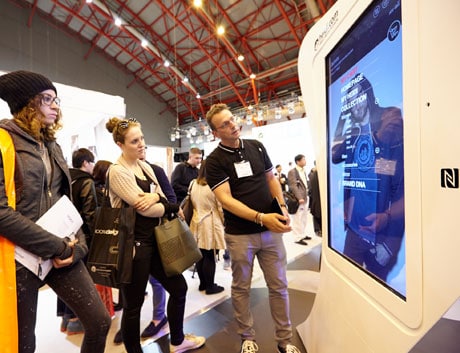
Swiss online fashion store Heidi.com is to use NFC to identify shoppers and drive personalized communications between the brand and its customers when it opens its first brick and mortar store in Neuchatel, Switzerland.
Consumers visiting the store will be able to tap their NFC phone or an NFC-enabled Heidi card against a virtual shopping screen, called the Heidi Virtual POS, which will then display the customer’s personal Heidi profile along with promotions and special offers tailored to them and based on their shopping history as well as information stored in their online Heidi profile.
Customers will be able to save coupons for redemption on the virtual POS as well as explore the entire Heidi collection. To place an order, they select the size and colour of the item and click to put the product in their virtual basket.
The retailer is working with Samsung to develop the system, which also allows the online retailer to offer its full product line from a store with a small footprint.
“We are working with remote payments at this time,” Samsung’s Thomas Arenz told NFC World. “The customer defines whether they want to receive a confirmation SMS or email. In that SMS or email, there will be a link that redirects the consumer to their virtual shopping basket.
“They will then be able to confirm that the order is correct and make the payment with the payment details that have already been stored to their Heidi profile. We have also been talking to the likes of PayPal and may well be going back to them to enable the option for consumers to pay using their PayPal accounts.”
“Retailers are facing a regular headache and that is the square footage of their stores,” Arenz continued. “For large retailers who have the room to showcase their entire collection, this isn’t such a problem, but for smaller retailers without the space to do so, it is a problem. The Heidi virtual POS is essentially adding an endless shelf element into their store, extending their offer while preserving the in-store revenue and reducing logistics cost and hassle at the same time.”
The companies are now working to finalise two applications; the consumer app and the retailer’s app, which will run on a tablet. The idea is that when a consumer identifies themselves using the consumer app, the platform will identify where they are and in what location and will then send a ping to the retailer’s app so that nearby shop assistants can greet the consumer by name and address personal customer preferences.
“The Heidi project is a very beautiful showcase and a lab where we can experiment with different ideas and eventually take it as a white-label solution to other brands and retailers,” Arenz added.
Next: Visit the NFCW Expo to find new suppliers and solutions